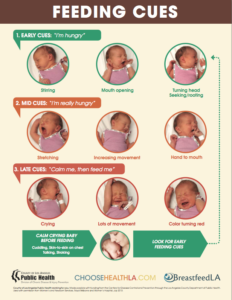This week we will be looking at another common question our CLC Shira hears. One of the biggest reasons why women stop breastfeeding or never begin in the first place is nipple soreness or pain. While this is a common side effect of breastfeeding it is not to be expected – instead, it indicates an issue with the latch.
When a new mother first begins breastfeeding it is normal to have a little discomfort but this should go away within the first week. This uncomfortable experience is shared by around 90% of new mothers and seems to be the worst around the 5th day after birth. After this newborn period, there may be a small amount of discomfort at the beginning of a breastfeeding session while letdown begins but it should not continue past this point. So why do some breastfeeding mothers experience continuing pain? The most common reason is that the baby doesn’t have a good latch that pulls the entire nipple into the mouth.
Working with a CLC can help to improve any latch problems and work to remedy nipple pain. Along with seeking assistance from a professional, there are some things that women can do at home depending on the cause of the pain.
If the pain is caused by poor latch moms can try:
- Watch for early feeding cues, as the baby gets hungrier they are more likely to grab or bite the nipple impatiently

Feeding Cues poster from BreastfeedLA
- Adjusting the baby’s latch, making sure to gently break the incorrect latch with a finger at the corner of the mouth instead of just pulling the nipple out.
- Cup the breast further back, ensuring that the hand is back from the areola
- Try massaging or hand expressing a little bit before feeding to help improve letdown
- Consider a different feeding position – laying the baby stomach-to-stomach while mom is leaning back at 45-degree angle and allowing the baby to self-latch can help
As the baby grows older there may be other causes associated with that growth:
- Baby positioning may need to change as they grow larger to ensure that a good latch is maintained
- As they grow older babies may bite when they are finished eating, to combat this be prepared to break the latch with a finger once they are done eating
- When babies are teething be prepared to offer them a teether rather than the nipple to chew on
Some pain may be caused by health problems or by the shape of the body:
- If mom has flat or inverted nipples she might need to use a nipple shield or suction to help ensure that the baby is able to get all of the nipple into the mouth
- Poor latching might be caused by a tongue or lip tie and pediatricians should check
- Thrush, a type of fungal infection in the mouth and on the nipple, can cause pain and discomfort. If thrush is suspected then a doctor should be consulted.
One of the simplest ways to treat sore nipple is the use of warm compresses. These will not only help to relieve pain but also help with any swelling. If nipples are chapped or cracked it is important to keep them clean. Lanolin creams can help to keep nipples moisturized and less sore.
In the end, the most crucial thing that women can do is talk to a lactation professional.
Sources:
https://www.todaysparent.com/baby/top-10-ways-to-prevent-and-treat-sore-nipples/
